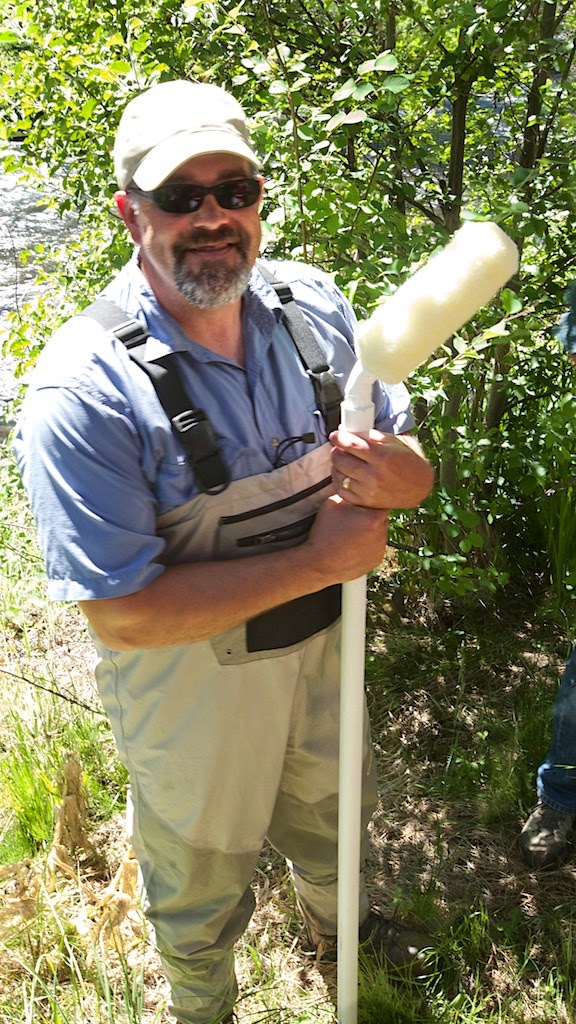Post written by Dan Hilburn
On the other hand, we spend barely $0.02/acre on noxious weed EDRR (Early Detection Rapid Response) in Oregon. This is true even though damage from noxious weed invasions can be more serious ecologically than fire damage.
___________________________________________________
Native plants grow back after fire, but they don’t compete well with invasive weeds. Weed invasions can be described as ecological wildfires in slow motion. That’s the problem – the slow motion part. Fires are immediate and frightening; weeds are slow and insidious. People perceive one as a threat right now and the other as a lower priority. If you ignore noxious weeds, nothing bad happens – for a quite a while, often years. Fighting the Two Bulls fire near Bend Oregon cost $714 per acre.
With invasive species, nothing bad happens quickly;
the threat can be more ecologically damaging, but it is insidious.
We spend barely 2 ¢ an acre protecting Oregon's ecosystems from invasive weeds.
___________________________________________________
 | ||
| The Metolius River is being invaded by non-native ribbon grass. |
There was a field trip at the same meeting to see the ribbon grass infestation on the banks of the Metolius River.
 |
| USFS Public Notice of Herbicide treatment |
The USFS has been working on the NEPA documents to address weeds in the Deschutes National Forest including ribbon grass for a decade. Last fall the pieces fell into place and some herbicide trials were put out using a weed wiper and several different rates of Glyphosate and Imazapyr. The wiper was required because of a perception that the herbicides could most safely applied to the invasive ribbon grass and yellow flag iris by wiping it on the leaves. The reality proved to be a little different.
The weed wiper looks like a paint roller on the end of a hockey stick-shaped piece of PVC pipe. In order to work, the wiper has to be saturated with concentrated herbicide. That concentrate drips from the wiper as you work and it is impossible to push down sufficiently with wiper on ribbon grass growing out into the water without immersing the fuzzy part of the wiper. Several of the trial sites had good control on the bank with a halo of surviving ribbon grass in the water. A backpack sprayer would be more effective and if used carefully, e.g. spraying from the water toward the bank, at least as safe.
___________________________________________________
There's a perception that a backpack sprayer is safer than the wiper.
The reality is different.
___________________________________________________
 | |
| Mike Crumrine, the ODA noxious weed control expert demonstrated the wiper method on ribbon grass. |
The difference comes from using a dilute solution with the backpack sprayer vs. a concentrate in the wiper. Water monitoring during last fall’s trials showed no detectable levels of either chemical in the river. I’d expect the same result with a carefully applied backpack treatment.
I’m not so naïve to think we can eradicate invasive weeds on the banks of the Metolius without getting minute quantities of herbicide into the water, but we don’t have a viable alternative. Weed pulling and solarization with plastic have already been tried and discarded as impractical and worse for the river and the native vegetation. Pulling ribbon grass “brings up the whole bottom,” and solarization kills everything under the plastic. If you stand on the Camp Sherman bridge and look downriver, you can see a little island that was covered with plastic to smother the ribbon grass. The little willow that used to grow there died during the solarization. Luckily we have non-persistent formulations of herbicides that are labeled for aquatic use.
So the perception is that wildfires are worse than weeds and that wipers are safer than backpack sprayers. My point is that the reality is sometimes different. We need to fund our weed EDRR programs like we fund fire suppression and we need to use the best available tools when we attempt to eradicate invasive species from high value habitats.
